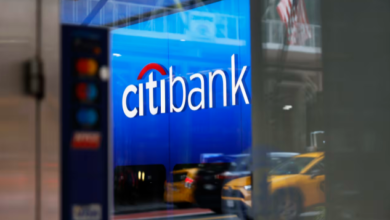Federal Reserve Makes Fourth Large Rate Hike in a Row

In a surprise to no one, the Federal Reserve voted on Nov. 2 to raise its target federal funds rate.
The increase of 75 basis points (0.75 of a percentage point) is the sixth hike this year and the fourth-consecutive hike of that size.
It puts the target federal funds rate in a range of 3.75% to 4% — the highest it’s been since 2008.
Why the change?
The goal of the Nov. 2 rate hike is the same as for the prior five hikes this year: Bring down inflation by slowing down economic activity.
The Federal Reserve, which is the nation’s central bank, is aiming for inflation to hover around 2% in the long run. Currently, the annual inflation rate is 8.2% — down from a high of 9.1% in June but still well above the Fed’s goal.
As the Fed said in a statement about its Nov. 2 decision:
“Inflation remains elevated, reflecting supply and demand imbalances related to the pandemic, higher food and energy prices, and broader price pressures. … The war and related events are creating additional upward pressure on inflation and are weighing on global economic activity. The Committee is highly attentive to inflation risks.”
What does it mean?
The federal funds rate is the rate that banks charge other banks for short-term loans.
When it’s rising, financial institutions tend to charge more interest on many types of loans and pay more interest on customers’ savings.
So a rising federal funds rate is bad news for folks with most types of debt because it means borrowing money will only become more expensive in the months ahead. (We get into the nitty-gritty of this in “6 Things That Are Getting More Expensive Amid Fed Rate Hikes.”)
Remember, the Fed’s goal is to lower inflation, which it does by slowing economic activity. And when borrowing money is more expensive, consumers tend to do less borrowing and thus less buying. That in turn tends to slow economic growth and lower demand — conditions that are conducive to easing inflation.
But a rising federal funds rate is good news for folks with savings because it means bank rates are likely to continue inching up in the months ahead.
Already this year, the national average rate on savings accounts more than tripled, from 0.06% in January to 0.21% in October — although you can easily earn 10 times that much at the most competitive banks.
Even the return on interest checking accounts edged up from 0.03% to 0.04% between January and October.
So if you haven’t shopped around lately to make sure you’re getting the highest return possible at the bank, now is a good time to take a look at what other institutions are offering.
Or, for a higher return than you are likely to find on savings accounts, look into money market mutual funds — which are Money Talks News founder Stacy Johnson’s favorite place to stash cash that isn’t invested in stocks.
As he recently wrote of money market mutual funds:
“They’re low-risk, pay whatever short-term rates allow and keep cash readily available.”
Barron’s reported in mid-October that the average yield on these funds had risen to 2.77% and was expected to cross 3% soon.
Peter Crane, president and publisher of Crane Data and Money Fund Intelligence, told the publication:
“Money funds follow the Fed, so there’s no mystery of where yields are going. … You haven’t seen 3% to 4% yields since prior to the [2008-09] financial crisis.”
What happens next?
The next meeting of the Federal Reserve committee that controls the target federal funds rate, known as the Federal Open Market Committee (FOMC), is Dec. 13-14. That means Dec. 14 is the next opportunity for the committee to vote to change the target rate.
It’s a safe bet that multiple additional rate hikes lie ahead, with the committee stating Nov. 2 that it “anticipates that ongoing increases in the target range will be appropriate.”
What’s less clear is the size and pace of future hikes, and how long they will continue.
Source link





